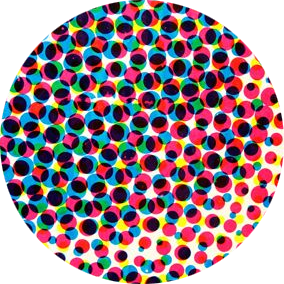Sublime Violence in Hellboy

The action scenes in Mike Mignola’s #Hellboy are simultaneously spectacular & contemplative, visceral & sublime. These competing moods enhance each other & reflect the character of Hellboy, a productive monster who straddles multiple worlds & fights to make his own destiny. 1/12

Each of Hellboy’s paranormal investigations typically devolves, at some point, into a violent slugfest between the nigh-indestructible Hellboy and some other type of inhuman monster, who is usually (though not always) very large & very strong, and thus, very hard to kill. 2/12

This clash of similarly inhuman, indestructible bodies facilitates lengthy spectacular action sequences made visceral by Mignola’s art style and Hellboy’s fighting style. Mignola’s heavy, blocky yet smooth line mirrors Hellboy’s combination of solidity and improbable grace. 3/12

Mignola’s use of silence & space, as well as the abstract quality of his character designs, also lends Hellboy’s fights a sense of sublimity. They are both weighty and grounded, weightless and airy. Bodies become abstract shapes suspended within spare, timeless backgrounds. 4/12


Mignola’s action scenes recall Charles Hatfield’s description of Jack Kirby’s similar facility for spectacular action, where “bodies shade toward the abstract & diagrammatic… [Kirby] treats bodies as bodies in time or vectors of force, as well as abstract design elements.” 6/12



Hellboy also exists at the intersection of multiple genres and eras, including sci-fi & horror pulps, hardboiled detective fiction, classic superhero comics, and international folklore & mythology. In addition, Hellboy is a monster. Laura K. Davies & Cristina Santos argue: 9/12

“The monster can be seen, to use Jacques Derrida’s words, as a transcendental third term, that which disrupts yet is integral to the established and symbolic order… Monsters challenge the homogeneity of society and Self by revealing inconsistencies, gaps, and the unknown.” 10/12

Comics, which combine image & text and make meaning out of fragments, are similarly hybrid—and potentially monstrous. In “Hellboy’s World,” Scott Bukatman notes, “Comics are little monsters, too, perhaps even what [Michael] Camille pungently calls ‘verminous whimsies.’” 11/12

Ultimately, the spectacular, sublime fights in Mignola’s “Hellboy” illustrate the sometimes-deceptive complexity of the comics form, wherein silence speaks loudly, bodies are ideas, and punch-ups can be deeply nuanced character studies—all while looking really darn cool. 12/12
